Are you sick of restrictive and boring diets? Forget about giving up food groups, tasty sweets, pasta, and pizza. If you eat like an authentic Italian, you will begin to lose weight, stay healthy, and enjoy life.
Who doesn’t love Italian cuisine? Italians adhere to the Mediterranean Diet which has been touted as one of the healthiest ways to eat to extend your longevity. That’s because Italians take eating seriously from the ingredients they cook with, the size of their portions, and the experience itself.
One thing I noticed when I was in Italy was that the majority of locals were not overweight. However, Italian Americans often are. Why is that? You are about to find out.
Below are some lifestyle habits that Italians have that make it easier for them to lose or maintain their weight.
1. They don’t eat a big breakfast
Most Italians in Italy start the day with a small cup of expresso (with or without cream) or a cappuccino. They may also eat a small sweet treat like a cornetto (which is like a croissant but not as buttery), toast with jam or Nutella, a piece of biscotti, a biscuit, cereal, or a little yogurt with fruit. Some only have a coffee and nothing else until lunch.
Having a tiny breakfast is sort of a modified version of intermittent fasting which is popular these days for dieters. That’s when you give yourself a window during the day to eat that lasts about 8 hours. It takes the edge off starving which can cause stress in your body but also allows you a calorie deficit because you are only eating 2 main meals instead of 3.
American-style breakfasts are available to tourists in Italy
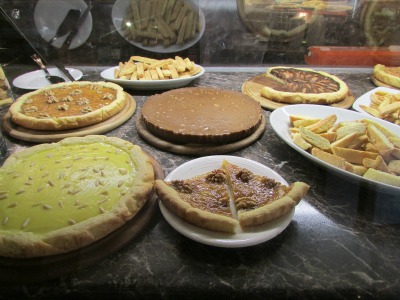
Hotels offer continental breakfast with eggs to satisfy foreigners. Italians love eggs and will often enjoy a tasty frittata, but they eat them for lunch rather than breakfast. If you are visiting Italy, cold cuts, cereal, yogurt, fruit, delightful tarts, and pastries as well as eggs, sausages, and other items are available for tourists. You may notice that foreign guests will pile up their plates while locals simply sip their expresso with a biscuit to dip into it.

2. Italians savor a satisfying lunch
Lunch is the most important meal of the day for most Italians. Shops close between 1 pm and 3:30 pm so that employees can go home to eat. If they have pasta, pizza, or heavy foods at lunchtime they will balance it out with something lighter for dinner such as a protein and vegetables or vice versa.
Overscheduled Americans rush their meals and opt for fast-food solutions. Italians are family-centric and most often eat together in large groups, taking their time to socialize and have conversations. They never worry about calorie consumption because they know they’ll walk it off.
When Italians eat lunch at a restaurant they will enjoy what the establishment has to offer but generally don’t eat out every day.
Travel tip: Tourists should avoid restaurants that have photos of food posted out front. It will be overpriced and not as authentic as restaurants frequented by locals.
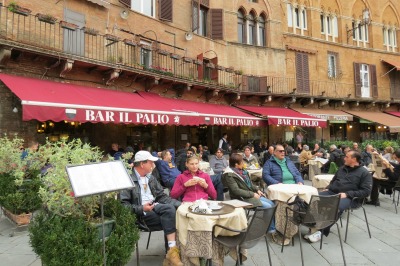
3. Dinner is often served late
Dinner in Italy may not be served at restaurants in Italy until 9 pm. We tried going to one early in Tuscany and they wouldn’t let us in. We had to wait until 7:30 pm and we were the first ones there. This debunks the idea of not eating after six.
4. “Gluten-free” is kind of laughable in Italy
Freshly baked bread is served with every meal and each region bakes its own style to complement its local cuisine. Bread from Naples tends to be salty while Tuscan bread is spongy. The bread served in Rome is a cornucopia of flavors from all over Italy. This also applies to the types of cuisine served in different regions of the country. Food in the South is warmer and tends to be lighter while Tuscan food is hearty and heavier.
Americans often slather their bread with butter but it’s rare to see a bread plate and certainly not butter at an Italian table. The American practice of dipping bread into olive oil and Balsamic vinegar is also not common in Italy.
The purpose of bread in Italy is to mop up sauces or to dip into soup. However, some toppings such as vine-ripened tomato bruschetta, olive tapenades, and fresh ground pâté might be served before the first course arrives.
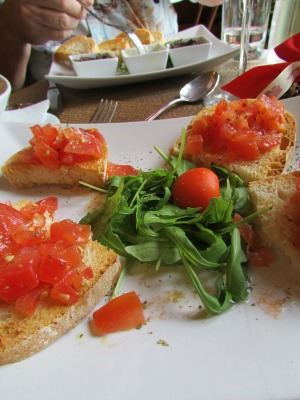

When my boyfriend and I traveled to Italy, I ate plenty of bread and never felt bloated. Italian flour hasn’t been altered as it has in America.
But don’t worry, if you are gluten-free, you can find options in Italy as well.
Pasta is available at most restaurants in Italy but that doesn’t mean that Italians eat it at every meal. Sophia Loren may disagree as she says she eats it every day. Italians often make pasta from scratch but also love the convenience of using high-quality semolina flour pasta from a package.
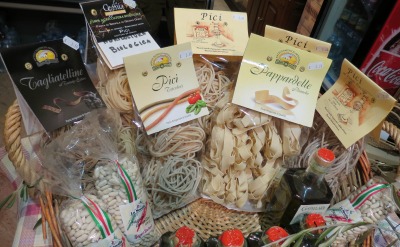
5. Italians always eat food that is in season
There are plenty of open markets in Italy where vendors sell food that is fresh and in season. Growers do not force vegetables and fruit to grow off-season as we often see in American markets. The tomatoes grown in Italy are nourished by rich volcanic soil so they are especially good and nutritious. However, you can get amazing tomatoes in a can with companies such as Mutti or Cento.
Did you know that Tomatoes were brought to Europe from South and Central America in 1521? Even then, Europeans were afraid they were poisoned and didn’t start eating them until the 1800s. They are not native to Italy or the Mediterranean region.
6. Portion size is key to losing weight if you eat like an Italian
Italians who live in Italy do not eat their meals in trough-size dishes and are conscious of portion size. They use small plates rather than the full-size dinner plates that Americans are accustomed to.

7. Meat is an accessory rather than the main part of a meal
Italians love to eat organically produced meats and seafood. Fattier meat like pork is served on special occasions such as this roasting pig on a spit during the Christmas holidays.
Fresh seafood is plentiful and eaten often in the coastal regions. In Northern Tuscany, where the weather is cooler, wild boar, rabbit, and other game meats are common fare.
Fun Facts: Chicken is never served on pasta or pizza in Italy. In fact, you won’t find very many chicken dishes in Italy. During medieval times when food was scarce, they chose to keep their chickens alive for their eggs and that tradition is still evident. Cheese isn’t served on pasta with fish or seafood
Gigantic meatballs are non-existent in Italy
Italians enjoy eating meat and seafood but do not serve huge portions of it during a meal. Meatballs are served in Italy but are small rather than softball-sized and do not sit on top of a huge bowl of spaghetti.
Fun Fact: Did you know that spaghetti and meatballs, Caesar salad, chicken or veal Parmigiana, Penne alla Vodka, Garlic bread, Fetaccini Alfredo, the kind of pepperoni we have in America, Italian dressing, and Marinara sauce did not originate in Italy and isn’t typically served there?
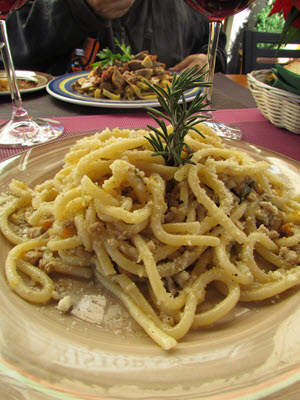
8. You won’t find a Monster Pizza in Italy
Pizza became popular in Italy during the late 18th century but was considered to be a street food. Unlike America, where pizza is thick and covered in cheese and toppings, including pineapple, real Italian pizza is lighter with simple toppings like grilled vegetables or a little meat that sits on a thin layer of tomato sauce. You won’t find a gigantic everything-on-it pizza in Italy.
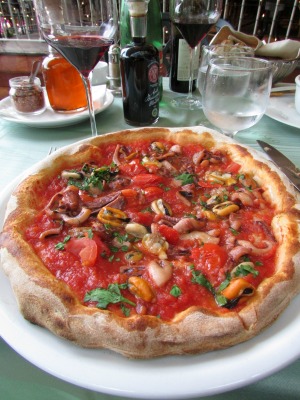
Fun Food Fact: A pizza does not come cut up in Italy and a waiter will look at your funny if you ask to have it cut. Pizza is also meant to eat with your hands so don’t ask for a knife and fork.
9. Italians love earthy food

Earthy white and dark truffles are found in the Northern region of Italy. The months of October and November are when truffle fairs take place in Piedmont, Tuscany, Umbria, and Le Marche. This time of year is fabulous to visit Italy because it isn’t as hot and crowded as it is in summer.
Italians also love earthy mushrooms that pop up in autumn. Varieties found there include Pratolio, Porcini, Finferlo, Russula, Chiodini, and Pioppini.
The top benefits of eating porcini mushrooms, for example, include their ability to aid weight, improve growth and development, and reduce inflammation, among others.
10. Drinking wine is an ancient tradition
Italians love wine with food but don’t go overboard and get drunk. They may have a glass with lunch or dinner but public inebriation is shunned.

11. Mineral water (agua minerales) is life
Mineral water in Italy is sourced from “termas,” created by volcanos. Small villages have dispensaries where locals can fill up their water jugs. Some of the minerals in Italian water are known to aid in bone health.
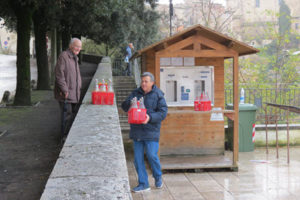
12. Italian soup may be THE secret to Italian longevity
A bowl of homemade vegetable minestrone is rich in nutrition and will soothe the soul. The image below is a Tuscan soup made with bread and vegetables that we enjoyed in Siena.

Hearty soups are always served during the cooler months while more lighter or cold fare is served in summer.
13. Greens and vegetables are served in abundance
Cold salads are not a mainstay menu item in Italian restaurants. Radicchio, arugula, and spinach are often cooked rather than served raw. Vegetables and lettuce are dressed simply with olive oil, vinegar or lemon, salt, and pepper. Please don’t ask for Ranch dressing. Italian waiters will look at you as if you are nuts.

Olive oil is another secret to Italian longevity and is generously used in almost all its cuisine.
14. Sweet indulgences are to be enjoyed without guilt
Italians love sweets like everyone else. They pride themselves on their rich Gelato, Tiramisu, cakes, tarts, and flavored ices, but are careful not to overindulge.
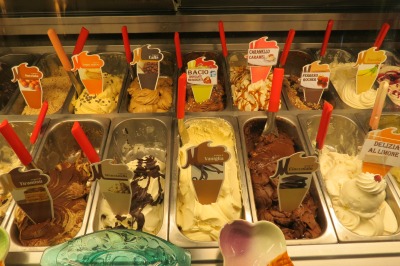
Eating should be fun as well as wholesome so don’t feel guilty if you want a piece of dark chocolate (preferably 70% cacao or more as a pick-me-up. Maybe limit yourself to one piece a day if you want to lose weight but relish the heck out of it.
Most authentic Italians leave room for dessert.
15. Lemons are a cure-all
A meal in Southern Italy isn’t complete without a shot of Limoncello or Grappa. Limoncello liqueur is made using the amazing lemons that grow in the south. This digestive “coffee killer” drink is zesty, smooth, and sweet.
We visited a Limoncello factory to see how it’s made.

The Amalfi Coast is known for its huge and flavorful lemons. The zest of the peel is used to make Limoncello liqueur and the pulp is used to flavor fish, salads meat, flavor cakes, or make sorbets.
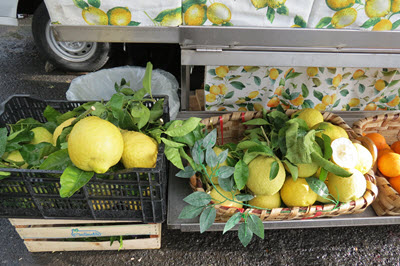
Some say Grappa tastes like paint thinner and isn’t for everyone. I found it to taste more like Scotch.
16. Italians keep moving throughout the day
I ate like a glutton when I was in Italy and didn’t gain weight because I walked everywhere. I didn’t worry about what I was putting into my body because it was always fresh from a garden, farm, or freshly caught on a boat. Italians walk on old cobblestone streets, up steep staircases, and some who are even elderly spend time in their gardens or pick olives off trees. Most don’t need to go to the gym because walking everywhere is part of their lifestyle.
17. Adopting the Italian way of eating isn’t hard or tortuous
To eat like an Italian to lose weight means consuming fresh seasonal vegetables, fruits, whole grains, and small amounts of meat in reasonable portions that haven’t been processed or tainted with “flavorings.” Cooking is simple rather than complicated. Take more time to eat slowly and enjoy leisurely meals with family and friends. Then, you can forget about dieting and stay healthy for life.
You may enjoy the book “No Ketchup on Spaghetti: The Complete Guide on How to Shop, Eat, and Cook like an Italian” by Chef Ale Gambini.
Do you eat like an Italian? What’s your favorite dish? Please leave a comment below.


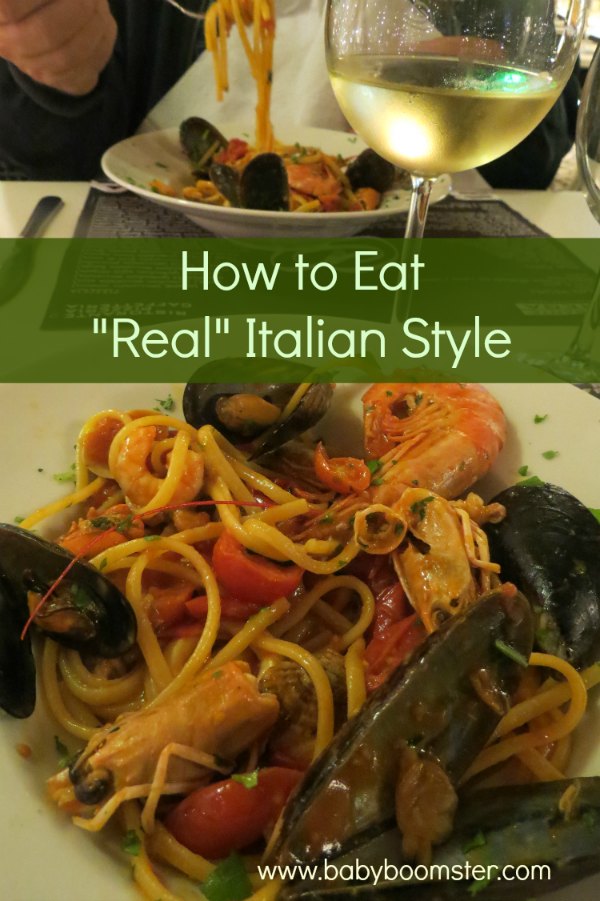


I love that Italian food has healthy options as well as those that aren’t so healthy. I like that I would be able to go to an Italian restaurant and get a salad or some good meat dish. That way, I can still enjoy the delicious food, but still eat healthy.
Sorry I missed this comment from 2016, Kendall, but you are right about eating delicious and healthy food in Italy.
Wow. And wow! I could totally eat this way! Wonderful article!
It’s a fabulous way to eat for sure, Diane.
I don’t think I’d be able to stay up late enough to have dinner in Italy. I’m getting ready to sleep around 9 pm. But then, we’re also waking up at 4 am.
Spain is even later. They usually eat around 10pm. I eat between 5-6 usually. But the food in both countries are amazing.
I loved the food in Italy! Lots of tidbits I didn’t know, and of course, there we were every morning, eating our American breakfast! Oh well…
I admit I wanted to try everything on the breakfast buffet when I was there because it was so good.